Further than looking in to types of art styles, drawing is a form of visual art. Lines, shapes, and color is used to create images. There is many types of drawing, each with its own unique style and purpose. In this post, I will explain in detail all popular types of drawing, the artists that draw them, and their significance in the art world.
Drawing typically involves using pencils, pens, charcoal, to create lines, shapes, and textures on paper or another surface. Drawings can be black and white or in color, and they can range from simple sketches to highly detailed and intricate works of art. Drawings are often used to plan out more complex artworks, such as paintings or sculptures.
Here are some of the popular types of drawing you should know:
Doodling:
Doodling is a type of drawing that involves creating spontaneous and often repetitive marks or patterns on paper or another surface. While doodling is often associated with absentmindedness or boredom, it can also be a form of creative expression and relaxation.
Doodling can take many forms, from simple squiggles and shapes to more complex and intricate designs. Some people use doodling as a way to brainstorm ideas or work through problems, while others do it simply for enjoyment or to pass the time.
While doodling may seem like a simple and informal type of drawing, it can also be a valuable tool for artists and designers. Doodling can help to develop hand-eye coordination, spatial awareness, and other skills that are important for creating more complex artworks.
Example Doodle Artist: Kerby Rosanes
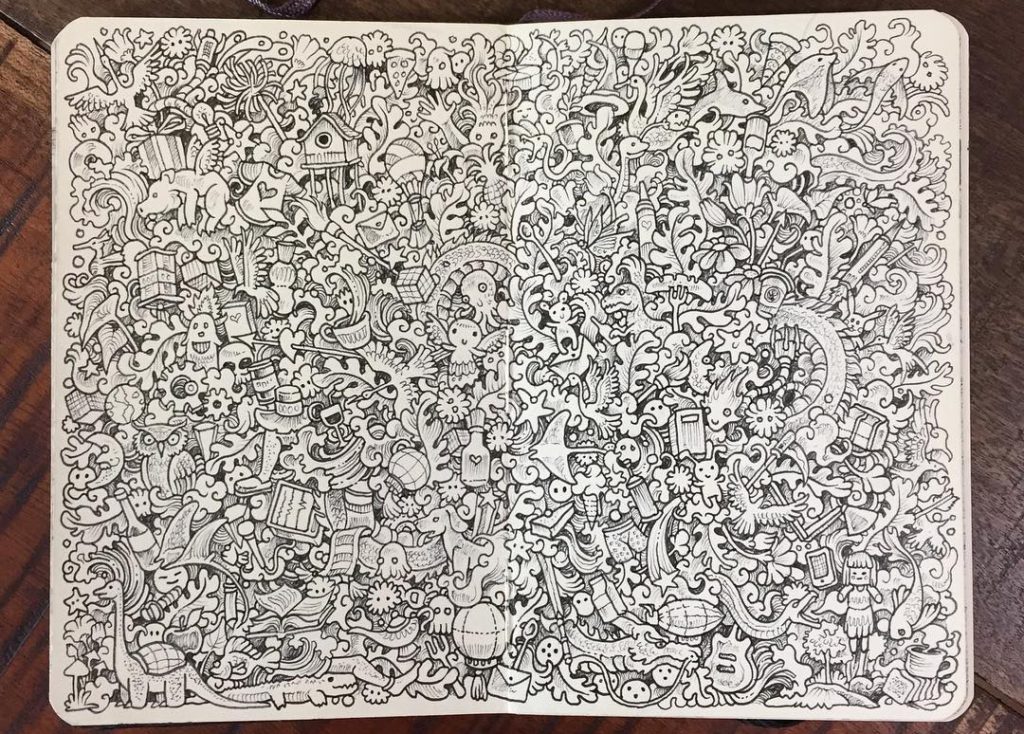
Kerby Rosanes is a Filipino illustrator who is known for his highly detailed and imaginative doodle art. He often combines animals, people, and objects in unexpected and surreal ways. Rosanes has published several books featuring his artwork, including “Animorphia” and “Geomorphia.” He has worked with a variety of high-profile clients, including Nike, Ford, and Sony.
Sketching:
Sketching is a highly versatile in that they can be tremendously simplified or have a lot of detail. The lines can be made with a variety of drawing tools, such as pens, pencils, markers, or brushes. They are used to create a wide range of effects, from light and delicate to bold and graphic.
One of the key characteristics of sketching is that it relies primarily on the use of line to create form and shape rather than relying on color. This can make line drawing a particularly effective medium for exploring the interplay between positive and negative space.
Sketching has a long history in the world of art, with examples dating back thousands of years to ancient civilizations such as Egypt, Greece, and China. It was typically used hand in hand with encaustic painting. In modern times, line drawing has remained a popular art form, with many contemporary artists using it as a way to explore a wide range of themes and ideas.
Example Line Drawing Artist: Albrecht Dürer
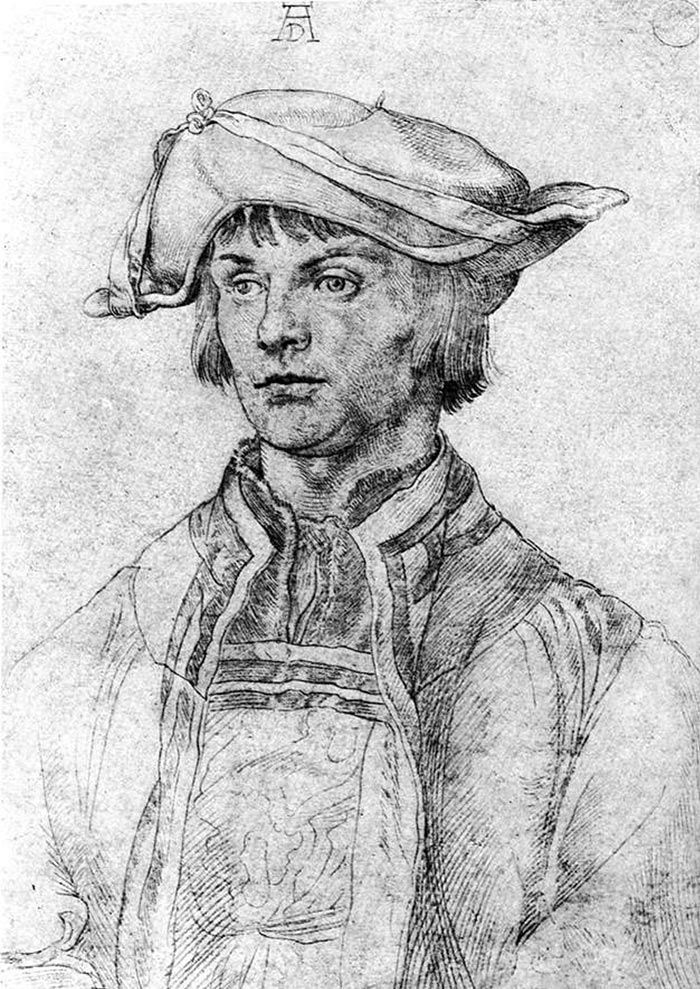
Albrecht Dürer was a highly skilled artist from Germany who lived during the Renaissance period. He was known for his precise and detailed line drawings. They were often created using techniques such as pen and ink, engraving, and etching.
Dürer’s line drawings are highly influential in the art world and are considered some of the finest examples of the medium. He often used his drawings as studies for his paintings and prints, and his work helped to elevate line drawing as a respected art form.
Cartooning:
Cartoon drawing is a type of art that involves creating humorous or satirical images of people, animals, or other subjects, often in a simplified or exaggerated style. Cartoons are typically created with bold, clear lines and simple shapes. They use bright, bold colors to convey a sense of fun and playfulness.
There is a long history in cartooning, dating back hundreds of years to early satirical prints and caricatures. In the early 20th century, cartoons became increasingly popular in newspapers and magazines. It is a way to convey political and social commentary in an accessible way.
Since then, cartoons have continued to evolve and are now widely used in a variety of media. This includes comic books, animated television shows and movies, and video games.
One of the key characteristics of cartoon drawing is that it relies on exaggeration and distortion. This includes exaggerating the size or shape of certain features, such as the head or hands, or using visual metaphors to convey a message. Cartoon drawing is also used to explore a wide range of subject matter, from the mundane and everyday to the fantastical and surreal.
Example Cartoonist: Charles M. Schulz
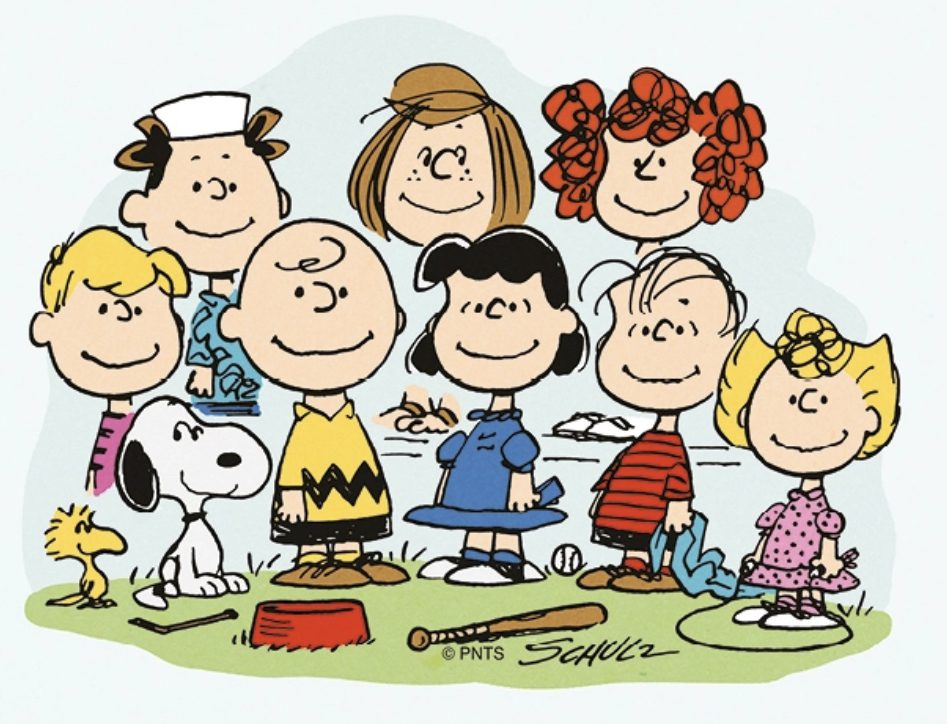
Charles M. Schulz was an American cartoonist who created the Peanuts comic strip. The strip was first published in 1950 and ran for over 50 years. This made it one of the longest-running and most successful comic strips in history.
He won numerous awards, including the National Cartoonists Society’s Reuben Award and the Congressional Gold Medal. Today, his characters and artwork remain highly beloved and continue to inspire new generations of artists and cartoonists.
Architectural Drawing:
Architectural drawing refers to the art and science of creating visual representations of buildings and other structures. It encompasses a wide range of techniques and styles. There is detailed technical drawings and blueprints, to more artistic renderings.
Architectural drawing is an essential part of the architectural design process. It allows architects and designers to communicate their ideas and plans to clients, engineers, and construction teams. Then, it is used to explore and experiment with different design options and to refine a building’s layout and features.
Also, there are many different types of architectural drawings, including floor plans, elevations, sections, and details. These drawings include a variety of information, such as measurements, materials, and construction techniques, as well as annotations and notes that help to clarify the design intent.
Example Architectural Artist: Leonardo da Vinci
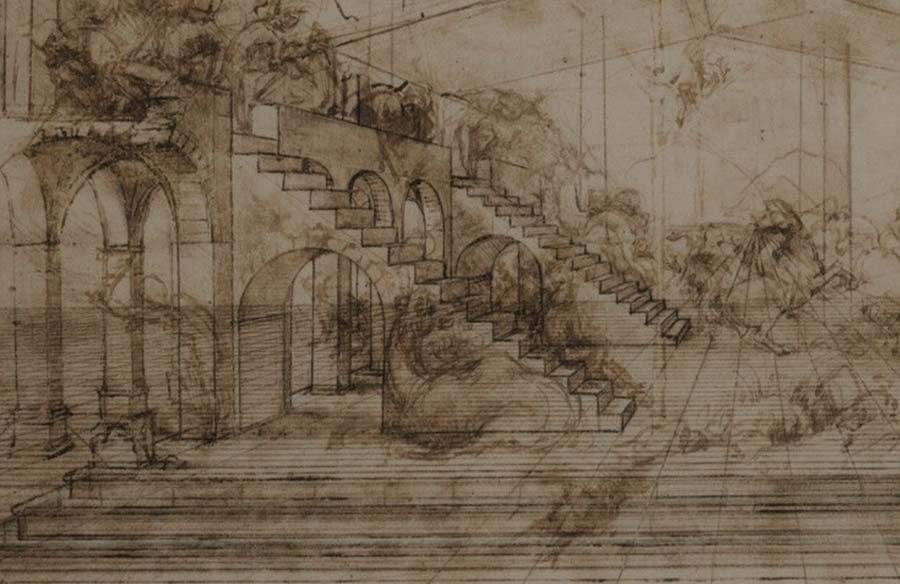
Leonardo da Vinci was a true master of many disciplines, including architecture and drawing. He is known to have produced a large number of architectural drawings and plans during his lifetime. Many of these were based on his keen observations of the natural world.
Da Vinci was particularly interested in the relationship between architecture and nature, and he often incorporated natural elements into his designs. For example, he designed a number of buildings with roofs that resembled the scales of fish, in order to better shed rainwater.
Da Vinci’s drawings and plans were not always intended to be built, but rather served as a means for him to explore and develop his ideas. Nevertheless, his architectural drawings have had a significant impact on the field of architecture, and continue to inspire architects and designers today. Both Architectural and geometric drawing highlight the capabilities of diagrammatic drawing.
Geometric Drawing:
Geometric drawing is a type of drawing that involves the use of geometric shapes. This is usually circles, squares, triangles, and rectangles, to create abstract or stylized images. It involves precise measurements and careful attention to detail, as well as a focus on symmetry and pattern.
Geometric drawing is used in a variety of contexts, including architecture, engineering, graphic design, and art. In architecture and engineering, geometric drawing is often used to create technical drawings and blueprints.
In graphic design and art, geometric drawing is used to create abstract or stylized images. This is found in logos, patterns, illustrations, and is also used to create perspective drawings.
Geometric drawing requires a high degree of precision and technical skill, as well as a strong understanding of geometry and mathematical principles. It is done using traditional drawing tools, such as pencils and rulers, or using digital tools, such as computer-aided design (CAD) software.
Example Geometric Artist: Kazimir Malevich
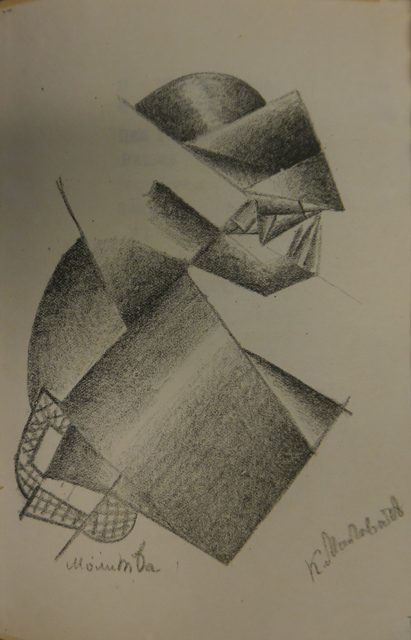
Kazimir Malevich is a key figure in the development of abstract art. His use of geometric shapes and pure abstraction had a significant influence on the art world. His most famous work is the painting “Black Square,” which is a seminal work of modern art. Malevich implements that art should be free from representational elements and should focus on the pure form and color of geometric shapes.
Typography Drawing:
Typography drawing, also known as lettering or calligraphy, is the art of creating visually appealing and decorative letters or text. This type of drawing involves careful consideration of letterforms, spacing, and arrangement in order to create a harmonious and aesthetically pleasing composition.
Typography drawing is done by hand or digitally, and involves a variety of tools and techniques. It can be used in a wide range of applications, from advertising and branding to graphic design, book covers, and more.
Example Typography Artist: Herb Lubalin
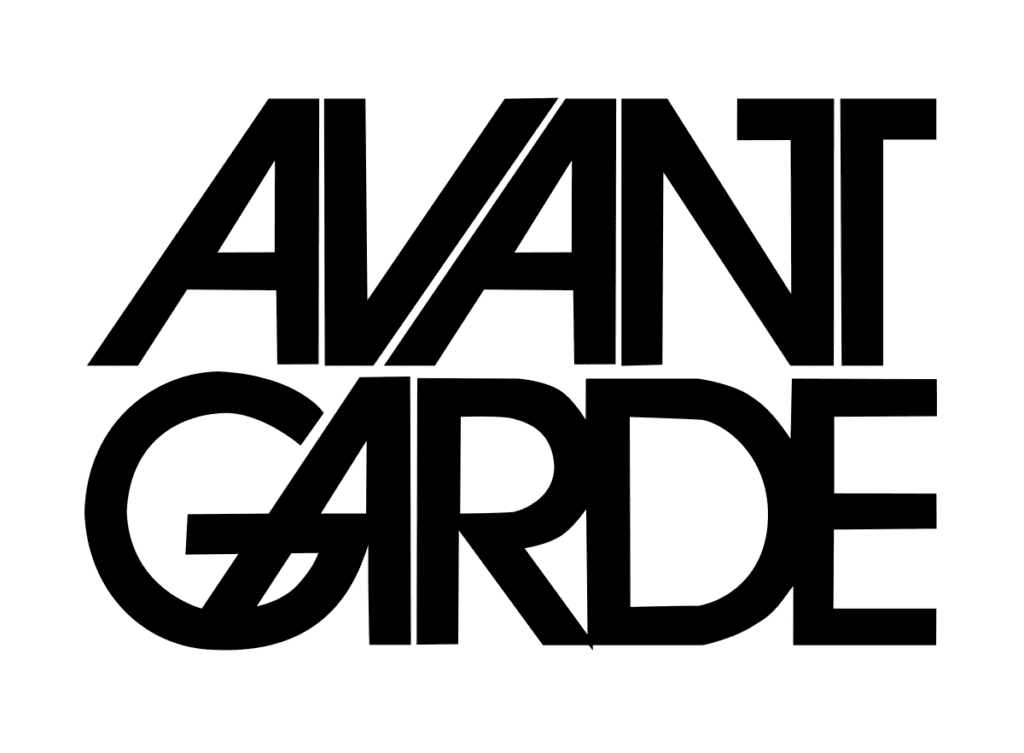
Herb Lubalin was a legendary American graphic designer and typographer who worked primarily in the 1960s and 1970s. He was known for his bold and expressive use of typography, as well as his innovative approach to graphic design.
One of Lubalin’s most famous typographic artworks is his design for the logo of the magazine Avant Garde. The logo features the word “Avant Garde” stacked on top of itself in a bold, condensed sans-serif font, with the “A” and “R” overlapping to create a striking and memorable visual.
Photorealism/Hyperrealism:
Photorealism, also known as hyperrealism, is a style of drawing or painting that seeks to reproduce an image as realistically and accurately as possible. The goal is to create an artwork that is so detailed and lifelike that it appears to be a photograph.
Hyperrealist artists use a variety of techniques to achieve this level of realism. There is careful attention to detail, precise shading and blending, and the use of high-quality materials. They often work from photographs, using them as a reference to create an exact replica of the original image.
Hyperrealism can be seen as a continuation of the tradition of realism in art, which seeks to represent the world as it appears to the eye. However, hyperrealism takes this idea to an extreme. It is creating images that are so realistic that they almost seem to defy the boundaries of art. While hyperrealism may not appeal to all tastes, it is a testament to the incredible skill and dedication of the artists who practice it.
Example Hyperrealism Artist: Chuck Close
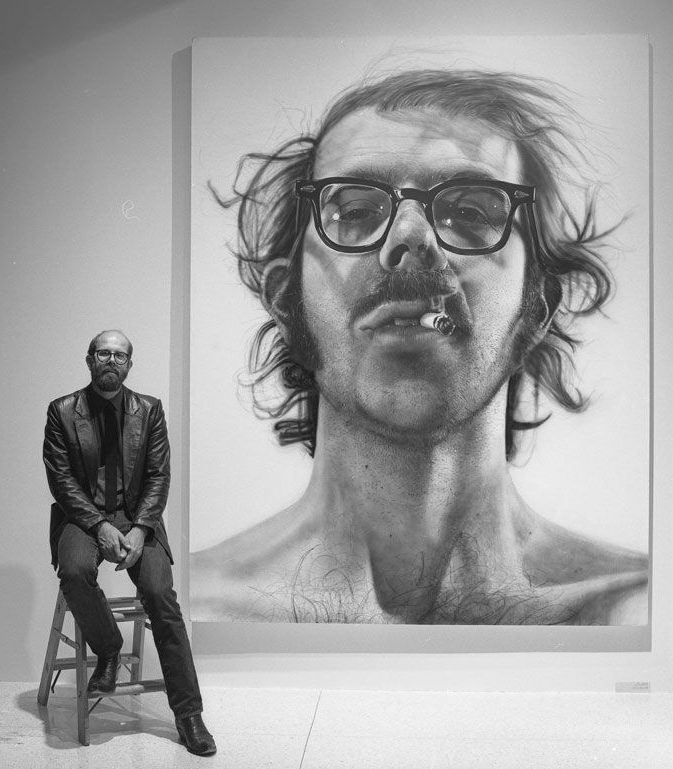
Chuck Close is famous for his use of a grid system to create highly detailed paintings that capture the nuances of his subjects’ features.
Close’s portraits are typically larger than life and feature incredible attention to detail. He often works from photographs, which he divides into a grid of squares. He then recreates each square on a larger scale, using a variety of media such as paint, pastels, or pencil
Anamorphic Drawing:
Anamorphic drawing is a technique used in art to create an image that appears distorted or elongated when viewed from a certain angle. However, then becomes clear and recognizable when viewed from a specific point. Sometimes, it can even become clear with a lens of some sort.
The artist creates the distorted image by manipulating the proportions of the subject or scene in the drawing. This is done using a grid or other method to ensure accuracy. The viewer then has to position themselves in a specific location or use a specific device to see the image in its correct proportions.
Anamorphic drawing has been used throughout art history, with examples dating back to the Renaissance. It has been used in a variety of mediums, including painting, sculpture, and even street art.
Example Anamorphic Artist: István Orosz
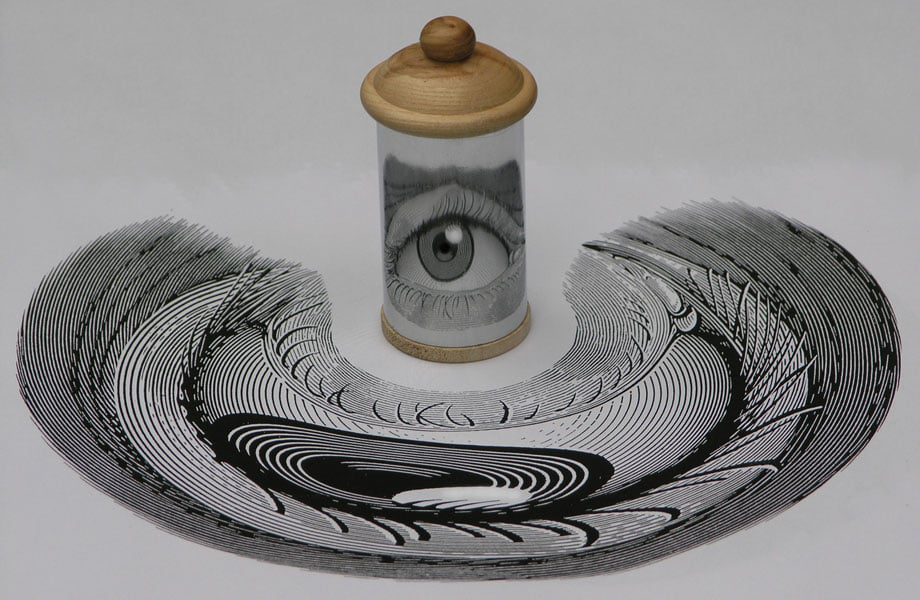
István Orosz is a Hungarian artist and graphic designer who is known for his intricate anamorphic drawings. Orosz often incorporates hidden messages or symbolism into his drawings. He spends a great deal of time working on these details to ensure that they are not immediately apparent, but can be discovered upon closer inspection.
Line Drawing:
Minimalist line drawing is a style of art that uses simple lines and shapes to create a clean, stripped-down image. This style often emphasizes simplicity, with a focus on conveying the essence of an object or idea through a minimal number of lines.
In minimalist line drawing, the artist typically uses a limited color palette. The lines themselves may be thin or thick, but they are always simple and straightforward, with no unnecessary detail.
One of the key features of minimalist line drawing is the use of negative space. The artist may use this negative space to create contrast or balance within the composition.
Example Line Drawing Artist: Ellsworth Kelly
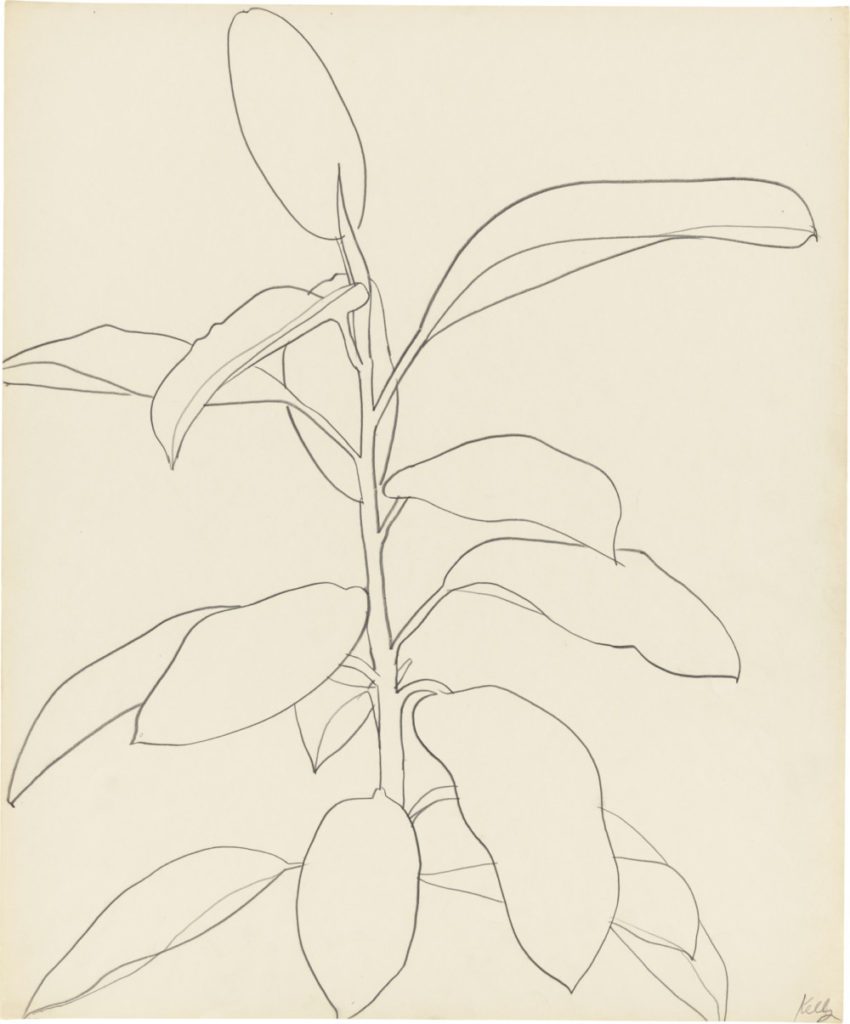
Ellsworth Kelly was an American artist known for his minimalist and abstract works. His line drawings often feature bold, geometric shapes and simple, clean lines. Kelly’s line drawings demonstrate his skill in using minimal means to create impactful and expressive works of art.

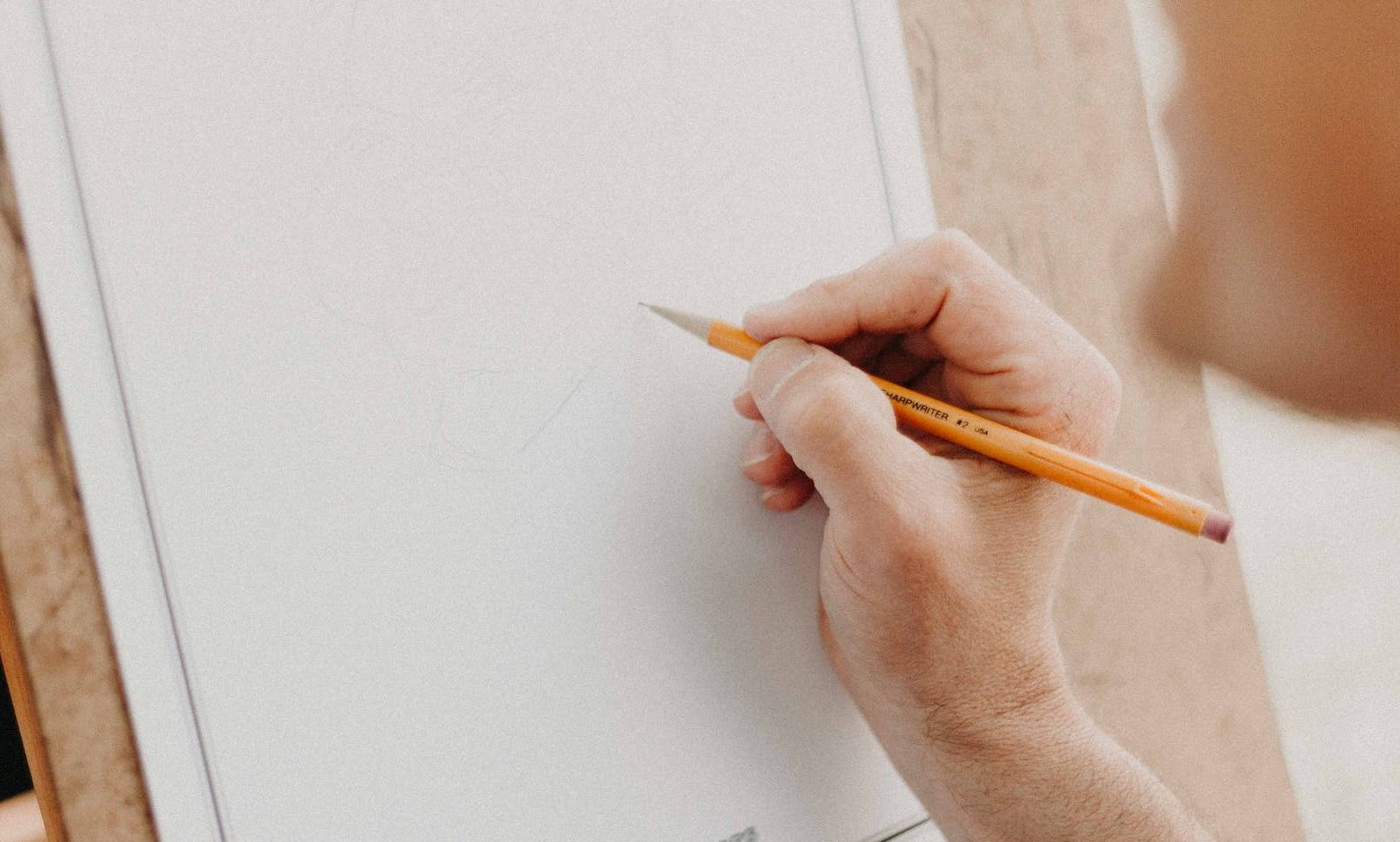
Comments are closed.